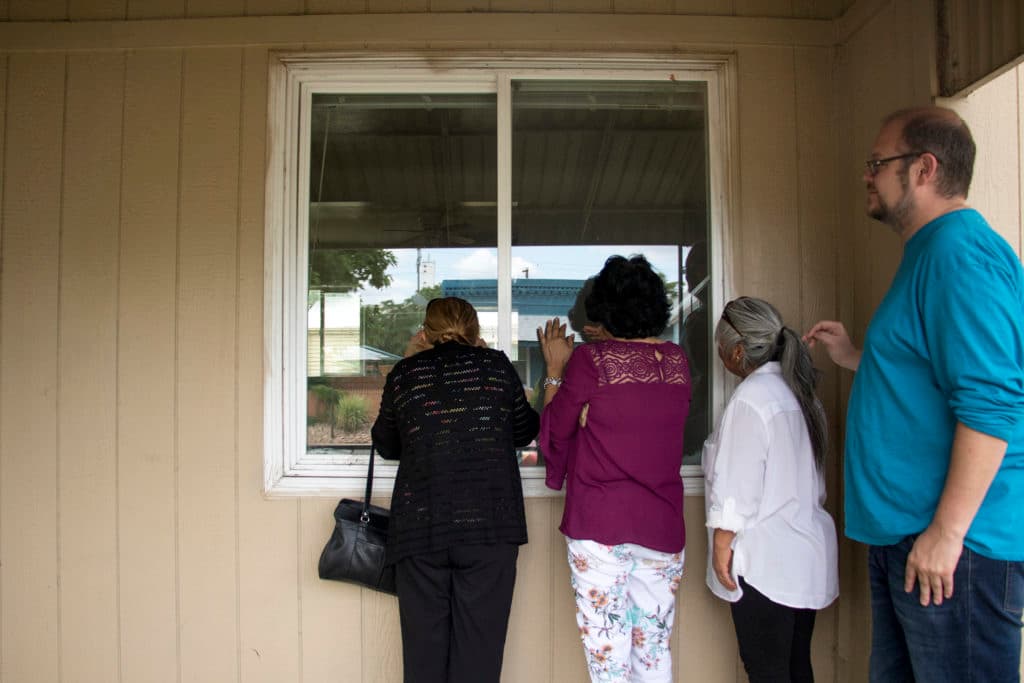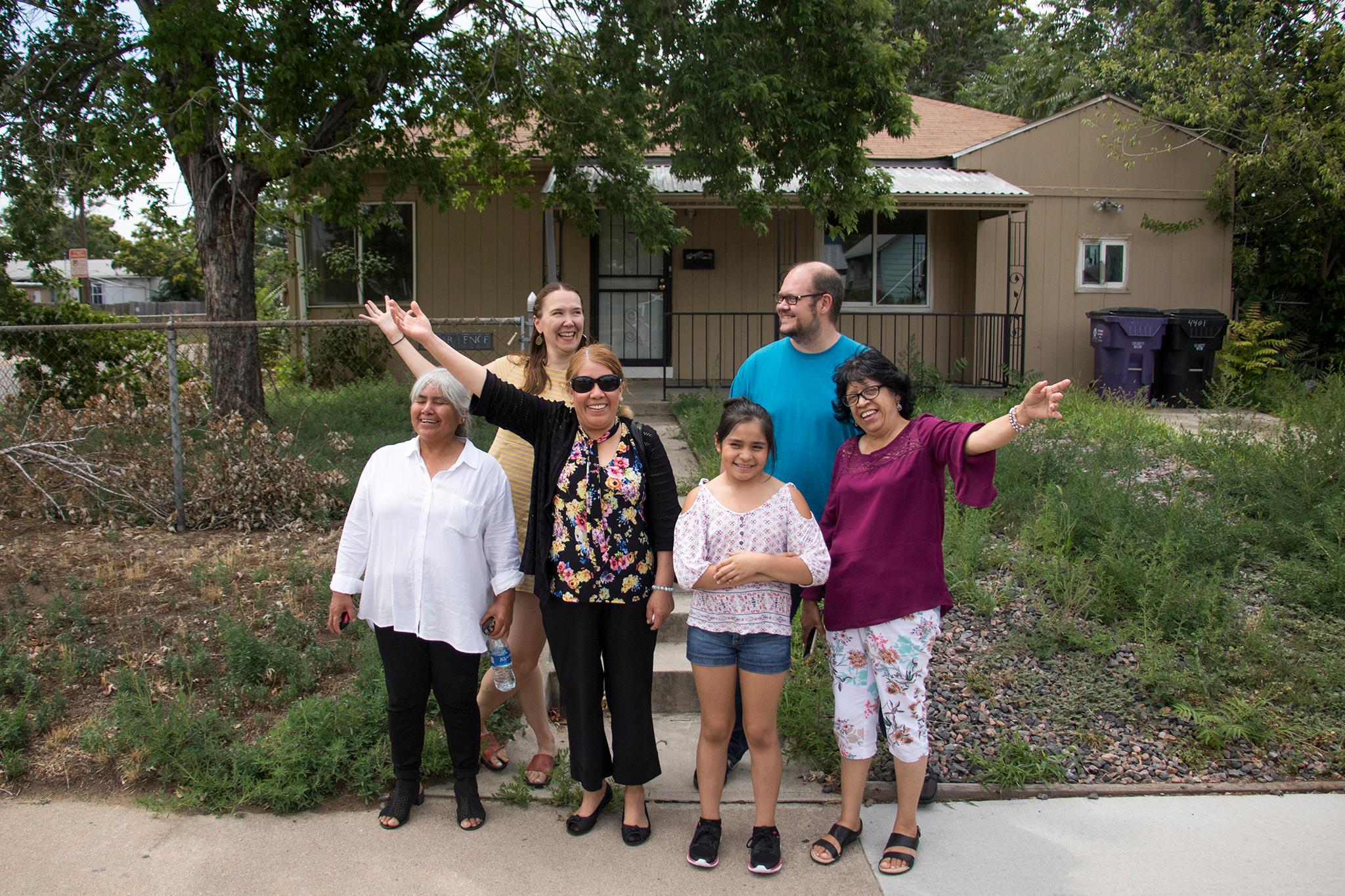The women from Globeville and Elyria-Swansea who put the C in community land trust wear bright pink T-shirts and speak softly, with determination and often in Spanish.
The T-shirts were out in neon force this week in the first of two back-to-back neighborhood gatherings that offered a glimpse of the urgency and anguish Denver residents feel as they seek ways to control rising housing costs. At Tuesday’s meeting in the auditorium at Bruce Randolph School and the next night in a small conference room at the Montbello Branch Library, dozens of participants discussed a trust model in which the land under a group of homes is owned communally and never sold, putting a brake on appreciation.
Donors, including the Colorado Department of Transportation, have allowed the GES Affordable Housing Collaborative to take steps toward creating its land trust, a project expected to take years to be fully realized.
The collaborative brings together the GES Coalition of activist-residents, most of them women who are identifiable by those shirts; Brothers Redevelopment, a company that build and manages affordable housing in Denver and provides other services to low-income homeowners and renters; and the Colorado Community Land Trust, which has been organizing land trusts since 2002, when it started with affordable homes in Lowry.
It's a proposed answer to questions about gentrification in Denver.
Homes and businesses were destroyed, people forced to move and the neighborhood was physically divided when I-70 and I-25, which intersect in GES, were constructed in the late 1950s and early 1960s. Now CDOT has embarked on an I-70 expansion and renovation that has meant more lost homes and displacement. Even as the noise and dust of highway construction begins, GES residents are seeing developers and investors show interest in their struggling neighborhood. Marijuana businesses have multiplied in the area. New commuter rail lines and plans for redevelopment of the nearby National Western complex have led to concerns the gentrification already taking place in nearby neighborhoods could soon overwhelm GES.
As part of an effort to avoid being pushed out by the rising rents and property taxes that seem inevitable when an older neighborhood is suddenly desirable, the GES Coalition reached out to Jane Harrington. The Colorado Community Land Trust's executive director has provided technical assistance as the neighbors did their research and sought funding.
"All these ladies in pink are really in charge," Harrington told Denverite. “I’m learning more from them than they are from me in terms of community organizing, moving forward and not giving up.”
Under the Colorado Community Land Trust model, houses are sold for less than they cost to build, making grants necessary. Homeowners will be able to make a profit when they sell, but will still have to keep the price below market rates.

GES residents will be the preferred buyers of the GES trust.
Brothers Redevelopment has already bought the first three of what residents hope will be many homes in the area for the trust. The project could one day grow to include apartments the trust would rent and community gardens.
At Tuesday’s meeting, audience members raised their cell phones to take a picture of a slide Harrington presented showing a three-bedroom trust home would cost $170,000. Buyers would own only the home and pay a ground lease to the trust, which would own all the land and be run by a board of directors composed of homeowners, community members and property experts.
GES residents acknowledged Tuesday that they will need much more than the $2 million from CDOT, awarded as part of the state’s efforts to compensate a community expected to be disrupted for years by the highway work. The residents are seeking additional funding from donors, banks and finance companies.
“We do not have enough money to build,” said GES Coalition member Virginia Calderi. “But I have hope.”
A Montbello group hopes to learn from the GES effort.
The next night, Emmett Hobley Jr., president of the Montbello Neighborhood Improvement Association, said he would be closely studying developments in GES as he and his neighbors set out to create their own trust. As in the neighborhoods to the west along I-70, Hobley and his collaborators touted their grassroots strength.
“This is from the bottom up,” LaMone Noles, a Park Hill resident who has joined Hobley’s trust planning board, told Denverite. He finished her thought: “I think that’s why ours is going to take off, because it’s community driven.”
They described Montbello as hard hit by the mortgage crisis at the start of this century, and said investors and developers are now eying homes in the area that had been foreclosed. Across the United States, studies have shown, African-American communities like Montbello and Hispanic areas like GES were disproportionately hit by foreclosures.
Leotis Compton, another member of Hobley’s planning board, said he lost his home in 2014 after fighting foreclosure for five years.
“I know of the frustration,” he said. He has been renting since and said a trust could be a way for him to be a homeowner again.
Harrington, of the Colorado Community Land Trust, addressed the Montbello meeting. She told the audience that trusts are complicated, expensive, and “a good vehicle for community control.”
The Montbello meeting went so late librarians ushered the participants out. Compton and others gathered around Harrington just outside the door to ask more questions. Bright cell phone screens illuminated their faces as the building lights went out.













